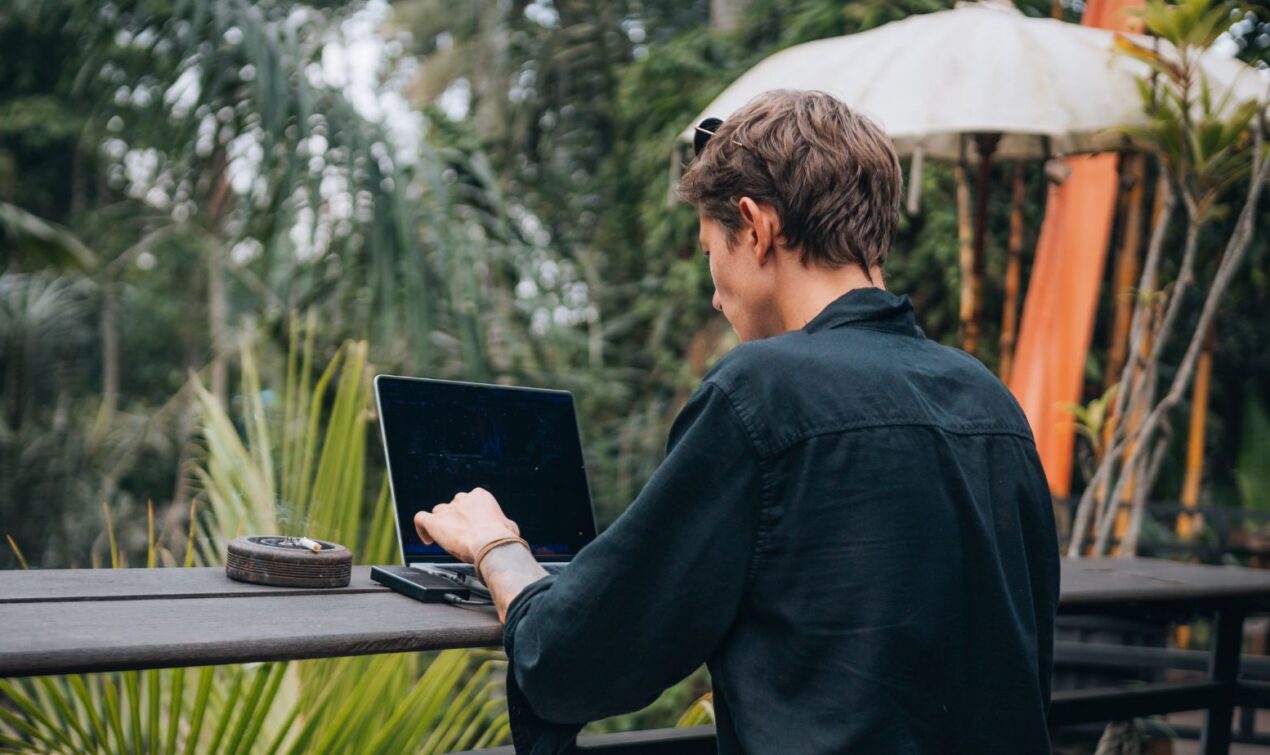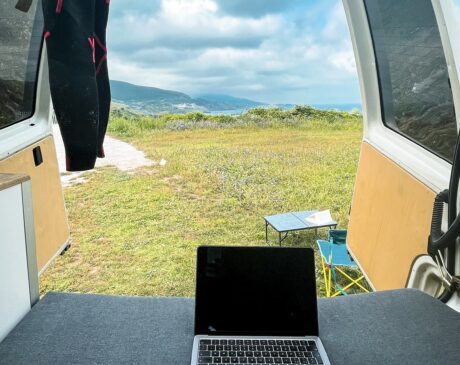How to Become a Digital Nomad: Your Complete Guide to a Life of Freedom and Remote Work

Imagine waking up to the sound of waves in Bali, answering emails from a café in Lisbon, or taking your lunch break on a mountain trail in Peru. For many, this isn’t a daydream—it’s everyday life. The digital nomad lifestyle is about blending work and travel, creating a career that fits around your passions rather than your postcode.
If you’ve ever wondered how to become a digital nomad, this guide walks you through the practical steps, essential skills, and real challenges of embracing a location-independent career.
What Does It Mean to Be a Digital Nomad?
A digital nomad is someone who uses technology to work remotely while traveling. They might be freelance writers, designers, developers, marketers, consultants—or even employees of fully remote companies. What connects them all is the ability to earn an income without being tied to a specific location.
This lifestyle isn’t just about quitting your job to travel the world. It’s about designing a life that gives you freedom, flexibility, and balance. You can work from anywhere: your apartment, a coworking space in Thailand, or a seaside café in Spain.

Step 1: Develop the Right Skills for Remote Work
To start your digital nomad journey, you need skills that can be performed and delivered online. Many nomads work in fields like:
- Digital marketing (SEO, content creation, social media management)
- Web design and development
- Copywriting and translation
- Virtual assistance or project management
- Consulting or coaching in specialized fields
If you don’t have experience yet, don’t panic. You can start by learning digital skills through free resources, online courses, or even volunteering on platforms like Workaway or Upwork. These experiences not only help you build a portfolio but also teach you how to collaborate remotely.
Tip: Focus on skills that combine creativity, communication, and tech literacy. Remote work thrives on people who are independent, adaptable, and proactive problem-solvers.
Step 2: Find Remote Work Opportunities
Finding reliable remote work opportunities is the next big step. Luckily, today there are hundreds of platforms where companies and clients post digital nomad jobs. Some of the best include:
- Upwork and Fiverr – for freelancers in writing, design, and tech
- Remote OK, We Work Remotely, and FlexJobs – for long-term, full-time remote positions
- LinkedIn – by filtering job searches for “remote” or “worldwide” positions
If you’re just getting started, don’t worry about being a full-time freelancer right away. Many digital nomads begin with side projects, remote internships, or contract roles before transitioning to full independence.
Networking within digital nomad communities—both online (like Nomad List, Reddit’s r/digitalnomad) and in-person at coworking spaces or meetups—can also lead to great collaborations and new job leads.
Step 3: Choose Your First Destination
Once you’ve got income flowing, it’s time to decide where to go. This is the fun part—but also where planning is key.
The best countries for digital nomads offer a mix of affordable living, reliable internet, and supportive communities. Popular destinations include:
- Portugal (Lisbon, Porto, Madeira)
- Thailand (Chiang Mai, Bangkok, Koh Phangan)
- Mexico (Mexico City, Playa del Carmen, Oaxaca)
- Spain, Bali, and Colombia also rank high for cost of living and community.
Many countries now offer digital nomad visas, allowing you to stay longer while legally working online. Portugal, Croatia, and Estonia are among the most digital-nomad-friendly. Always research visa requirements, health insurance, and potential tax implications before you go.
Step 4: Understand Visas, Taxes, and Legal Considerations
Legal and financial aspects can seem intimidating—but they’re essential.
First, determine whether your home country taxes you on global income. Some countries, like the U.S., do; others don’t. Consider speaking with an accountant who specializes in digital nomad taxes to understand your obligations and possible deductions.
As for digital nomad visas, these are temporary residence permits designed for remote workers. They usually require proof of income and health insurance, allowing stays from 6 months to 2 years.
Pro tip: Always have international health coverage and keep copies of all contracts and invoices—these documents can save you from headaches when crossing borders or applying for visas.
Step 5: Stay Productive While Traveling
One of the biggest challenges of digital nomadism isn’t finding Wi-Fi—it’s staying productive while your surroundings constantly change.
Here’s how successful nomads do it:
- Create routines, even when you’re on the road. Set work hours and stick to them.
- Use productivity tools for remote workers like Trello, Notion, or Asana for task management.
- Invest in noise-cancelling headphones and a reliable VPN to protect your data on public networks.
- Schedule work around your travel, not the other way around. Morning flights, evening coworking—whatever fits your rhythm.
Coworking spaces are game-changers. They help you stay focused, meet like-minded people, and separate “work mode” from “exploration mode.”

Step 6: Prepare for the Challenges of Digital Nomadism
The remote work lifestyle looks glamorous online, but there’s a lot that Instagram doesn’t show. Here are some of the most common challenges of digital nomadism—and how to overcome them:
- Loneliness: You might find yourself missing home or struggling to build lasting friendships. Join nomad groups, attend local meetups, or work from shared spaces to stay connected.
- Unstable income: Freelancing while traveling can mean ups and downs. Create a financial buffer—three to six months of expenses—to handle slow months.
- Burnout: It’s easy to overwork when your office is your laptop. Set boundaries and make time to enjoy your surroundings.
- Internet issues: Always have a backup plan—like a local SIM card or portable hotspot—when Wi-Fi fails.
Remember: being a digital nomad is as much about mindset as it is about logistics. Flexibility, patience, and problem-solving are your best travel companions.
Step 7: Build a Sustainable Lifestyle
The real goal isn’t to work from everywhere—it’s to build a life that feels fulfilling. Successful nomads often balance travel with stability, spending several months in one place to deepen connections and avoid burnout.
Find your rhythm: some people move every few weeks; others stay in one base city and take shorter trips. What matters most is creating a sustainable remote work lifestyle that supports your personal and professional growth.
Tip: Don’t forget to plan for long-term things like retirement savings, healthcare, and skill development. Remote work gives you freedom, but it also requires discipline to maintain stability.
The Future of Location-Independent Careers
The pandemic accelerated a global shift toward location-independent careers, and that trend isn’t slowing down. Companies are more open than ever to hiring remote talent, and an increasing number of people are trading the 9-to-5 office life for flexibility and adventure.
According to a 2024 Forbes report, millions of professionals are now living and working as digital nomads worldwide. Technology has made it possible to collaborate across time zones, while destinations around the world are adapting with new visa options, coworking hubs, and nomad-friendly infrastructure.
This is more than a passing trend—it’s a cultural movement redefining the way we think about work and life.
Final Thoughts
Becoming a digital nomad isn’t about escaping reality—it’s about reshaping it. It’s the decision to design your life intentionally, to find meaning in both your work and your adventures.
It takes courage to start, discipline to maintain, and curiosity to keep going—but the reward is a life rich in experiences, growth, and freedom.
So, if you’re ready to take that leap: learn the skills, find your first remote opportunity, and book that one-way ticket. Your remote work lifestyle begins the moment you decide to make it happen.



